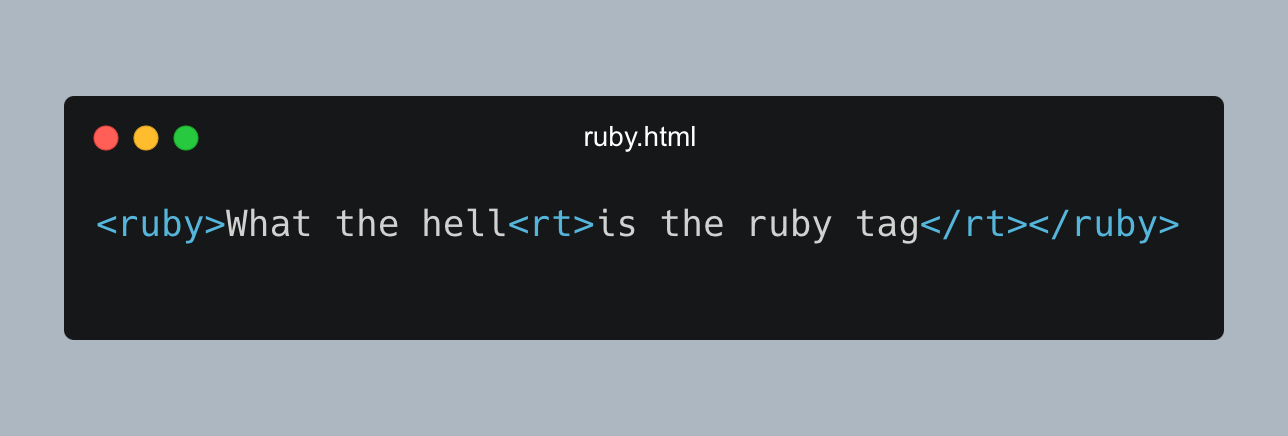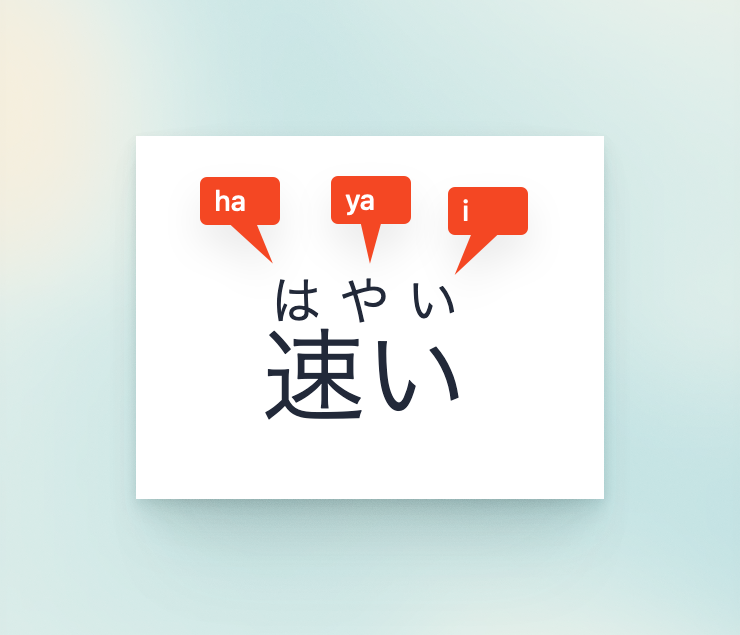
Exploring the <ruby> Tag
What
Ruby text is small text displayed above regular text.
Regular
<ruby>Regular<rt>Small</rt></ruby><rt> stands for Ruby Text
Why
In english, every letter has a sound. This is called a phonetic alphabet. You can figure how to pronounce “Regular” by sounding out each letter. However, there’s a small amount of languages with non-phonetic alphabets.
Japanese has thousands of characters that don’t individually have a sound. You generally have to remember the pronunciation of each character. This is where ruby text comes in — It displays the pronunciation for those who might not yet know it.
速い
<ruby>速い<rt>はやい</rt></ruby>In addition to Japanese’s logographic writing system of thousands of characters (Kanji), there’s also a phonetic alphabet “Hiragana” which you can sound out just like English. Ruby text can be used to display the corresponding Hiragana characters for each Kanji character.

Use cases
I’ve been learning Japanese with a flashcard app called Anki 🔗.

It works like you’d expect. It shows you the front of the card, you try to remember the back, then you flip it to check your answer. This card is asking me to remember the definition of the Kanji character on the front — What if I know that “hayai” means fast, but can’t yet read “hayai” from this Kanji?
Anki is highly customizable in that cards can be written in HTML with CSS styling.
I made a card template that displays ruby text on the front of the card when I hover my mouse over it.

Previously, I’d put the Hiragana in parenthesis like this:

This isn’t ideal because you don’t get the chance to try to remember the Kanji pronunciation. It also just looks ugly and distracting — Minimalism is key for distractionless studying.
Takeaways
Anywhere you can use HTML, consider getting creative 🙂
Furigana is the term for ruby text in Japanese. I knew what furigana was, so I curiously asked ChatGPT if there was a way to write furigana in plaintext:
